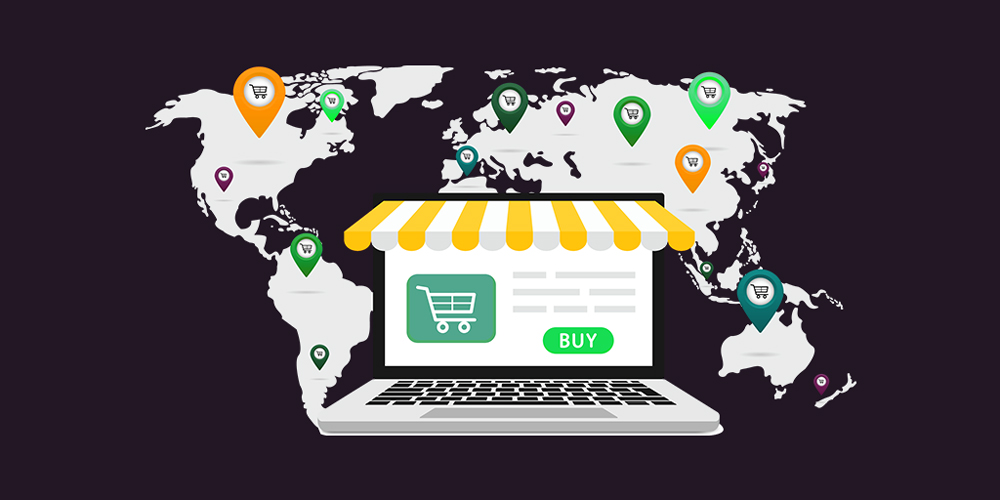将航运数据转化为营销动力--要么使用,要么丢失!
参观 邮政包裹, where global logistics meets clever data-driven marketing. In a world where shipping is no longer just about moving boxes, Shipping Data has become the hidden goldmine behind successful e-commerce growth. It doesn’t only tell you where your products are—it tells you who your customers are, what they want, and when they’re ready to buy again.
This article will show you how to transform Shipping Data into a marketing powerhouse. You’ll learn what it is, why it matters, and how to make it your competitive edge.

What Is Shipping Data and Why Does It Matter?
Shipping Data refers to the information collected during the fulfillment and delivery process. It encompasses shipment origins, destinations, transit times, carrier performance, delivery costs, and customer behavior related to logistics.
Key Components of Shipping Data
- Tracking information: Delivery status, transit duration, and carrier updates.
- Customer details: Shipping addresses, preferred delivery methods, and purchase frequency.
- Performance metrics: On-time rates, damage reports, and return patterns.
- Cost breakdowns: Freight expenses, fuel surcharges, and cross-border fees.
When managed intelligently, this data goes far beyond operations—it becomes a marketing asset. Businesses that harness Shipping Data can optimize campaigns, boost retention, and predict future sales with accuracy.
How Does Shipping Data Improve Marketing Performance?
1. Understand Customer Geography and Demand

Shipping Data reveals where your strongest markets are. By analyzing destinations, you can identify high-performing regions and tailor promotions to specific zones.
例如
- If most of your orders go to California and Texas, you can run region-based campaigns with faster delivery guarantees.
- For international orders, use localized landing pages or ads that highlight customs-friendly shipping.
Knowing where your buyers live and how they prefer to receive orders can turn logistics information into a targeted marketing map.
2. Boost Customer Retention Through Predictive Insights
Every delivery generates signals about customer habits. Some people make repeated purchases, while others make a single purchase. Shipping frequency, order timing, and return history all help forecast when someone is likely to repurchase.
通过连接 Shipping Data to your CRM, you can:
- Send reminders before a customer’s typical reorder period.
- Offer discounts to high-value repeat buyers based on delivery volume.
- Detect inactivity early and trigger win-back campaigns.
Predictive retention based on delivery activity enables brands to reduce churn and increase customer lifetime value.
3. Build Trust With Real-Time Transparency
Customers today expect clarity at every step. If they can track their parcel from the warehouse to the doorstep, they’re more likely to trust your brand.
整合 Shipping Data into your customer communication process enables:
- Automated status updates via email or SMS.
- 实时跟踪 embedded directly in your website.
- Post-delivery satisfaction surveys are closely tied to the successful completion of shipments.
Transparent delivery experiences increase satisfaction, reduce complaints, and reinforce your credibility.
4. Identify Weak Points in Your Logistics Funnel

Every late delivery, damaged parcel, or high shipping fee tells a story. Analyzing aggregated Shipping Data helps pinpoint what slows your business down.
You can identify:
- Carriers with poor performance.
- Routes with recurring delays.
- Product categories with higher return rates.
By addressing operational bottlenecks, marketing teams establish a strong foundation to deliver faster, more reliable service—claims backed by data, not guesswork.
How Can E-Commerce Brands Use Shipping Data Strategically?
1. Personalize Post-Purchase Communication
A customer’s journey doesn’t end after checkout—it continues through delivery. Use Shipping Data to personalize post-purchase messages.
例如
- If a customer’s order just cleared customs, send a friendly update with the expected delivery time.
- After a successful delivery, send a thank-you message along with a discount code for the following order.
- For repeat buyers, offer loyalty rewards tied to the number of successful shipments.
Each message, based on delivery progress, adds a touch of personalization that generic emails can’t achieve.
2. Enhance Your Advertising Targeting
Ad platforms love data, and Shipping Data can fuel more intelligent targeting.
By integrating it with analytics tools, you can segment customers not only by demographics but by shipping behavior:
- Fast repeat buyers: Target them with “priority shipping” promotions.
- International customers: Show ads highlighting customs-friendly options.
- Local buyers: Emphasize the convenience of 当日送达 or pickup.
This approach turns raw delivery metrics into profitable advertising insights.
3. Strengthen Brand Loyalty With Delivery Performance Metrics
Show your customers that you deliver what you promise—literally. Display on your site:
- “99% On-Time Delivery” badges.
- “Real-Time Tracking Provided” icons.
- “Free Shipping Over $50” guarantees.

Such proof points derived from Shipping Data reinforce reliability and motivate new buyers to trust your service. Loyalty begins when customers see that you care about every detail of their shipments.
What Tools Help Unlock the Value of Shipping Data?
To turn Shipping Data into marketing fuel, you need systems that collect, analyze, and visualize it effectively.
Recommended Tools and Integrations
- Shipping Management Platforms – Tools like ShipStation, EasyShip, or PostalParcel automatically integrate carrier data, streamlining the shipping process.
- 分析仪表板 – Use Google Data Studio or Power BI to visualize delivery trends.
- 客户关系管理集成 – Sync shipping records with HubSpot or Salesforce to build behavioral profiles.
- Marketing Automation Tools – Connect shipping updates to Mailchimp or Klaviyo for triggered campaigns.
With the proper setup, logistics information flows seamlessly into marketing actions.
How Do You Turn Shipping Data Into Measurable ROI?
Shipping insights mean little without clear performance metrics. To measure success, focus on both operational 和 marketing KPIs.
Key Metrics to Track
- Delivery Accuracy: Percentage of orders delivered on time.
- Repeat Purchase Rate: Frequency of returning customers after timely deliveries.
- 客户终身价值 (CLV): Impact of faster shipping on retention.
- Ad Conversion Rate: Improvement in campaign response after location-based targeting.
- Support Ticket Reduction: Drop in complaints after proactive delivery updates.
The more accurate your Shipping Data, the more precisely you can connect logistics improvements to marketing outcomes.
What Does the Future of Shipping Data Look Like?

The role of Shipping Data is evolving fast. In the next few years, expect these changes:
- 人工智能驱动的预测 – Artificial intelligence will forecast delivery delays before they happen, allowing brands to communicate proactively.
- 区块链验证 – Transparent and tamper-proof data sharing across carriers and suppliers will strengthen trust.
- 可持续性指标 – Carbon tracking in shipments will become part of marketing, showing eco-conscious delivery performance.
- Cross-Platform Integration – E-commerce platforms will embed Shipping Data directly into product analytics, closing the loop between purchase intent and fulfillment success.
Forward-thinking companies will no longer view shipping as a back-end task—it will become a key differentiator in customer engagement.
Why Shipping Data Is Your Hidden Marketing Weapon
Ignoring Shipping Data is like ignoring your customers’ voice. Every order carries a message about what’s working and what’s not.
Upon analysis, this information reveals patterns that enable businesses to refine their logistics, enhance the customer experience, and maximize the impact of their marketing efforts.
To stay ahead of the competition, brands must combine logistics precision with marketing creativity. That’s where platforms like 邮政包裹 come in—helping global sellers transform their shipping information into powerful marketing intelligence.
Shipping data isn’t just numbers—it’s your business story, written in real time. Use it or lose it.
行业洞察
收件箱消息
Nulla turp dis cursus.整体释放,预留空间








